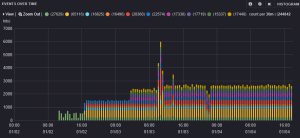If you’re a Linux user, you will be happy to know that VMware offers a Linux version of it’s Horizon View client. However, it’s a bit of a strange release strategy. For Ubuntu, my distro of choice, VMware only offers the packages for the LTS versions of the popular OS. This is kind of a bummer because the LTS versions of Ubuntu Linux are only released every 2 years. I really do not like running an OS that’s even one release behind.
Well, I decided this just cannot stand. I wanted to have a working View client on my latest Ubuntu 14.10 release which was not an LTS version.
Google was surprisingly unhelpful here, only really offering suggestions on installing a 32 bit version and changing repositories in your sources.list file. I did not really want to cross the streams that much on a fresh build, so I decided to try and find a cleaner way to get the Horizon View client installed. This was actually quite a bit easier than I expected.
The good news is, the packages VMware releases for the LTS versions of Ubuntu can pretty much install on any of the later versions of Ubuntu. Here’s how I did it:
- Browse to http://archive.canonical.com/ubuntu/pool/partner/v/vmware-view-client/ from your web browser and download the latest .deb package file. At the time of this writing, the latest version is 2.2.0 for Ubuntu 14.04 LTS
- Open the file with archive manager and click “Install”, or install it from command line via
sudo dpkg -i vmware-view-client_2.2.0-0ubuntu0.14.04_i386.deb
- The package should auto-resolve some dependencies for you and install successfully.
That’s it! You now have the VMware Horizon View client installed on the latest/greatest release of Ubuntu. It’s been working great for me, and I hope it works just as well for anyone who comes across this.


